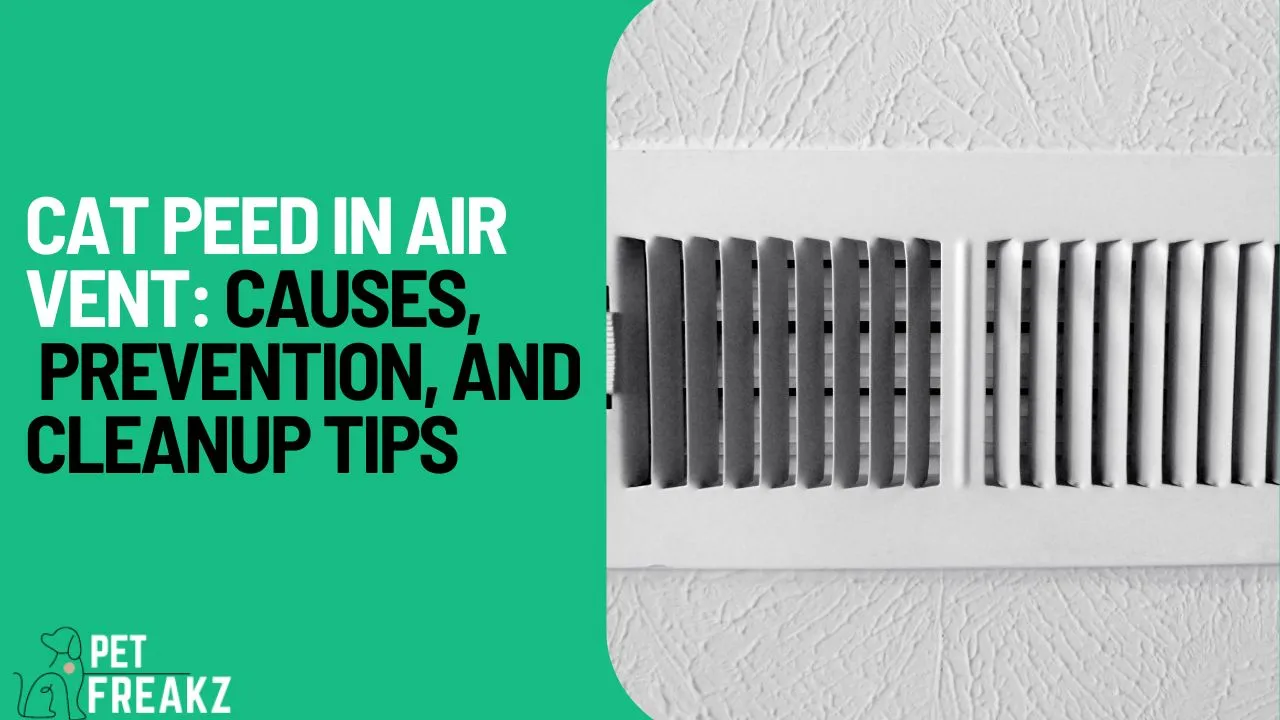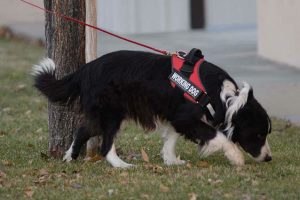Introduction
Cats are adorable and beloved pets, but they can sometimes exhibit behaviour that leaves their owners perplexed and frustrated. One such behaviour is when a cat peed in an air vent. Not only does it create a mess and a foul odour, but it can also lead to potential damage to the ventilation system. In this article, we will explore the possible causes of why cats peed in air vents, provide tips to prevent it from happening, and how to get rid of the urine smell in air vents.
Table of Contents
Understanding why cats peed in air vents
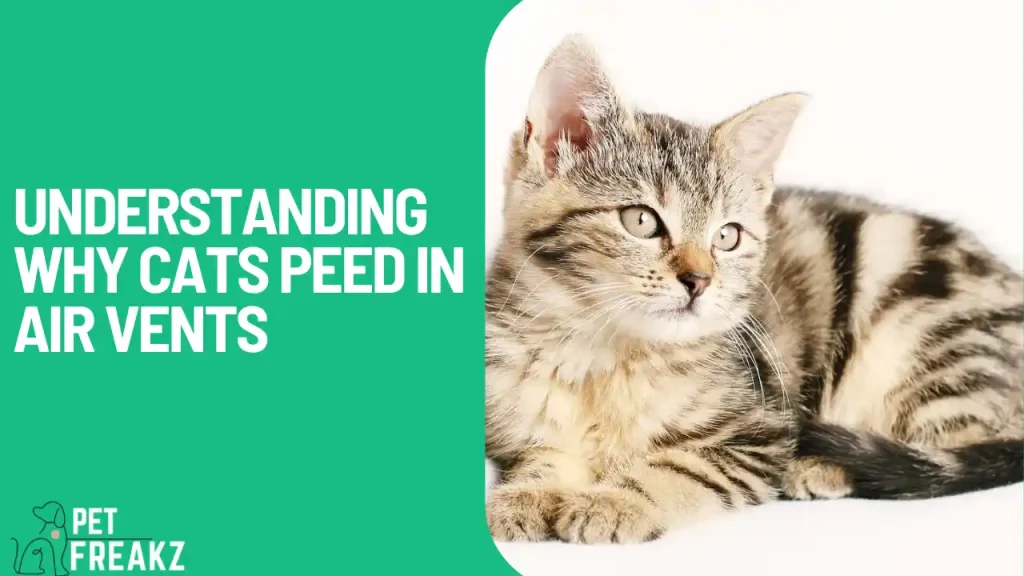
Cats are known for their cleanliness, but sometimes they may choose to relieve themselves in unexpected places, such as air vents. Understanding why cats pee in air vents can help us address this issue effectively.
Territory Marking
Cats are naturally territorial creatures, and marking their territory is one way they communicate with other cats. When a cat peed in an air vent, it may be trying to assert its dominance or claim ownership of a particular area.
Stress and Anxiety
Stress and anxiety can trigger inappropriate elimination behaviours in cats. Changes in the environment, such as the introduction of a new pet or a move to a new house, can cause a cat to feel stressed and resort to urinating in unusual places like air vents.
Medical Issues
Underlying medical conditions, such as urinary tract infections or bladder stones, can cause a cat to experience discomfort or pain while urinating. In some cases, a cat may associate the pain with the litter box and seek alternative places to relieve themselves.
Inappropriate Litter Box Conditions
If the litter box is dirty, crowded, or placed in an inconvenient location, a cat may choose to urinate elsewhere, including air vents. Cats are clean animals by nature, and they prefer clean and easily accessible litter boxes.
How to get rid of urine smell in air vents
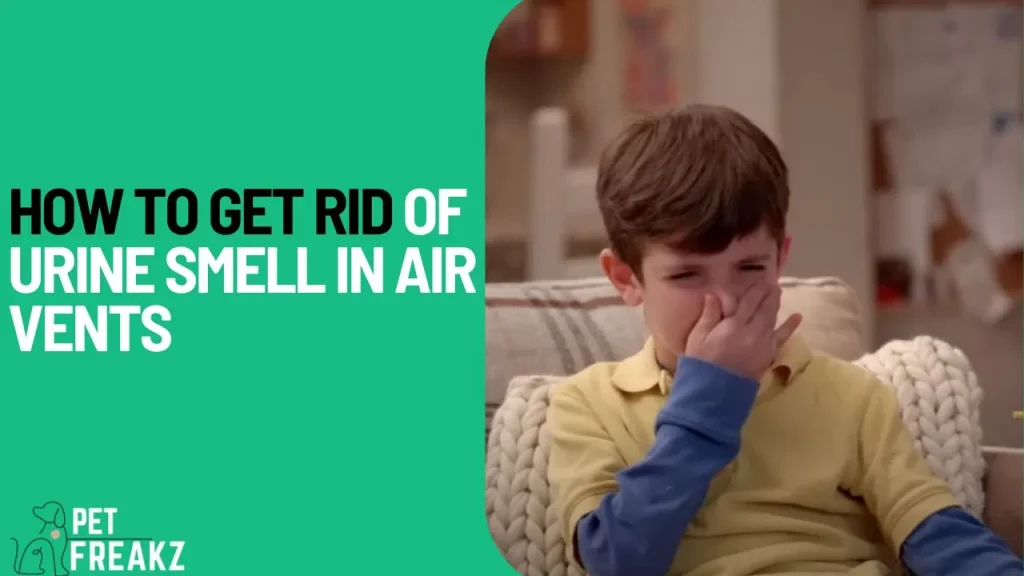
Cleaning cat urine from air vents requires thoroughness and attention to detail. Follow these steps to effectively get rid of urine smell in air vents:
Turn off the HVAC system
Before starting the cleaning process, ensure that the HVAC system is turned off to prevent the spread of urine and odour throughout the house.
Safety Precautions
Put on gloves and a mask to protect yourself from any potential allergens or bacteria present in the urine.
Remove Vent Covers
Carefully remove the vent covers by unscrewing or unclipping them. Place them in a mixture of warm water and mild detergent to soak.
Clean the interior of the air vent
Using a long-handled brush or vacuum cleaner attachment, gently clean the interior of the air vent to remove any loose debris or urine particles. Be cautious not to push the urine further into the vent system.
Wipe down the vent covers
After allowing the vent covers to soak for a sufficient amount of time, scrub them gently with a brush to remove any urine residue. Rinse them well, then let them totally air dry.
Disinfect the area
Use a pet-safe disinfectant to clean the area surrounding the air vent. This will help eliminate any bacteria and neutralize the odour.
Check for further damage
Inspect the air vent system for any signs of damage or lingering odour. If necessary, consult a professional to assess and repair any potential issues.
By following these steps, you can effectively clean cat urine from your air vents and restore a fresh and hygienic environment in your home.
How to stop cats from peeing in air vents
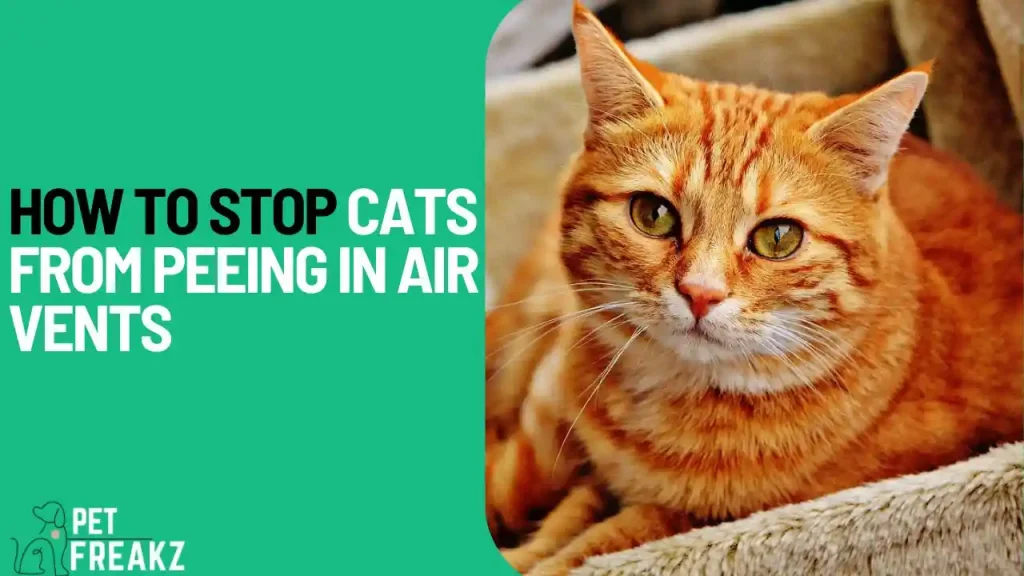
Preventing cats from peeing in air vents requires a combination of behavioural modifications and environmental adjustments. Here are some strategies to help deter your cat from using your air vents as a litter box:
- Provide an appealing litter box: Ensure that your cat has easy access to a clean and well-maintained litter box. Choose a litter that your cat prefers.
- Keep the Litter Boxes Clean: Regularly scoop the litter boxes and clean them thoroughly to maintain a hygienic environment for your cat. Cats are more likely to use the litter box if it is clean and odour-free.
- Create a positive association: Make the litter box an inviting space for your cat by placing it in a quiet and accessible area. Consider using pheromone sprays or catnip to attract your cat to the litter box.
- Keep the air vents inaccessible: Install vent covers with small holes or mesh that prevent cats from entering the vents. This physical barrier will discourage your cat from approaching the vents in the first place.
- Redirect your cat’s attention: Provide your cat with alternative outlets for its natural behaviours, such as scratching posts and interactive toys. Engage in regular play sessions to keep your cat mentally stimulated and physically active.
- Address underlying medical or behavioural issues: If your cat continues to exhibit inappropriate urination behaviours, consult with a veterinarian to rule out any medical conditions or discuss potential behavioural modifications.
- Minimize Stressors in the Environment: Create a calm and stress-free environment for your cat by minimizing loud noises, introducing changes gradually, and providing hiding spots or vertical spaces for them to retreat to when they feel overwhelmed.
By implementing these preventive measures, you can significantly reduce the likelihood of your cat peeing in air vents and maintain a clean and odour-free home environment.
Cat-proofing your air vents
To prevent cats from accessing your air vents in the first place, it’s essential to cat-proof them. Here are some methods to make your air vents inaccessible to your cat:
- Install vent covers: Use vent covers with small holes or mesh that cats cannot squeeze through. Ensure that the covers are securely fastened to prevent cats from removing them.
- Block the vent openings: If you have air vents that are not in use, consider blocking them with furniture or other objects that are too heavy for cats to move. This will prevent cats from entering the vents and potentially using them as litter boxes.
- Create physical barriers: Use baby gates or pet barriers to restrict your cat’s access to certain areas of your home where air vents are located. This will prevent them from reaching the vents and engaging in inappropriate urination behaviour.
- Apply deterrent sprays: Some pet stores offer deterrent sprays that are designed to discourage cats from approaching certain areas. Spray these deterrents around the air vents to discourage your cat from getting too close.
By implementing these cat-proofing measures, you can effectively safeguard your air vents and prevent cats from using them as a place to relieve themselves.
Tips for keeping cats out of vents
Keeping cats out of vents requires a combination of deterrence and redirection. Here are some tips to help keep your cat away from your air vents:
- Regular play and exercise: Engage your cat in regular play sessions and provide them with plenty of opportunities for exercise. A tired and stimulated cat is less likely to engage in undesirable behaviours such as vent exploration.
- Redirect their attention: Provide your cat with alternative outlets for their natural behaviours. Place scratching posts, climbing trees, and interactive toys near the air vents to redirect their attention and keep them engaged.
- Use deterrents: Apply pet-safe deterrents such as citrus sprays or double-sided tape around the air vents. Cats typically dislike the smell of citrus and the stickiness of tape, which can deter them from approaching the vents.
- Create alternative hiding spots: Cats are naturally drawn to hidden and secluded spots. Provide your cat with cozy hiding places such as cat beds, blankets, or enclosed cat condos to satisfy their need for privacy without venturing into the air vents.
The dangers of cat urine in air vents
Cat urine in air vents can pose several health risks and cause unpleasant odours in your home. The ammonia in cat urine can irritate the respiratory system, especially for individuals with asthma or allergies. Additionally, the bacteria present in the urine can lead to the growth of mould and mildew, which can further exacerbate respiratory issues.
Furthermore, the strong and persistent smell of cat urine can be challenging to eliminate. The odour can permeate your home, making it unpleasant for both residents and visitors. It’s crucial to address cat urine in air vents promptly to ensure a healthy and odour-free living space.
Solutions for eliminating urine smell in air vents
The lingering smell of cat urine in air vents can be challenging to eliminate, but several solutions can help neutralize the odour:
- Vinegar and water solution: In a spray bottle, combine equal parts vinegar and water. Spray the solution onto the air vent grates and allow it to sit for a few minutes. Then you can clean it with a cloth or paper towel. Vinegar is known for its odour-neutralizing properties and can help eliminate the smell of cat urine.
- Enzymatic cleaners: Enzymatic cleaners are specifically designed to break down the odour-causing molecules in cat urine. Follow the instructions on the cleaner’s packaging and apply it to the affected areas of the air vents. These cleaners work by targeting the source of the odour and can be highly effective in eliminating the smell.
- Activated charcoal: Place activated charcoal near the air vents to absorb and neutralize odours. Charcoal is known for its ability to absorb various smells and can be an effective natural solution for eliminating the scent of cat urine.
- Baking soda: Sprinkle baking soda onto the air vent grates and allow it to sit for several hours or overnight. Baking soda is an excellent odour absorber and can help neutralize the smell of cat urine. Vacuum or wipe away the baking soda after it has absorbed the odour.
- Professional cleaning services: If the smell of cat urine persists despite your efforts, consider hiring professional cleaning services that specialize in odour removal. These professionals have the expertise and equipment to thoroughly clean and deodorize your air vents.
By employing these solutions, you can effectively eliminate the urine smell from your air vents and create a fresh and pleasant living environment.
Choosing pet-safe floor vent covers
When selecting floor vent covers for your home, it’s crucial to choose pet-safe options that provide both functionality and durability. Here are some factors to consider when choosing pet-safe floor vent covers:
- Material: Opt for vent covers made from durable materials such as metal or high-quality plastic. These materials are less likely to be damaged by your pets and can withstand their scratching or chewing behaviours.
- Ventilation: Ensure that the vent covers allow proper airflow throughout your home. Good ventilation is essential for the efficient operation of your HVAC system and for maintaining a comfortable indoor environment.
- Easy to clean: Choose vent covers that are easy to remove and clean. This will make the process of cleaning cat urine or any other debris from the vents more convenient.
- Secure fastening: Look for vent covers that have secure fastening mechanisms to prevent your pets from removing them. This will ensure that your pets cannot access the air vents and potentially urinate in them.
- Aesthetics: Consider the overall aesthetics of your home when choosing pet-safe vent covers. Select covers that blend seamlessly with your interior design and complement the overall look of your space.
By considering these factors, you can choose pet-safe floor vent covers that meet your functional needs and provide a safe environment for your pets.
What to do if a dog peed down an air vent
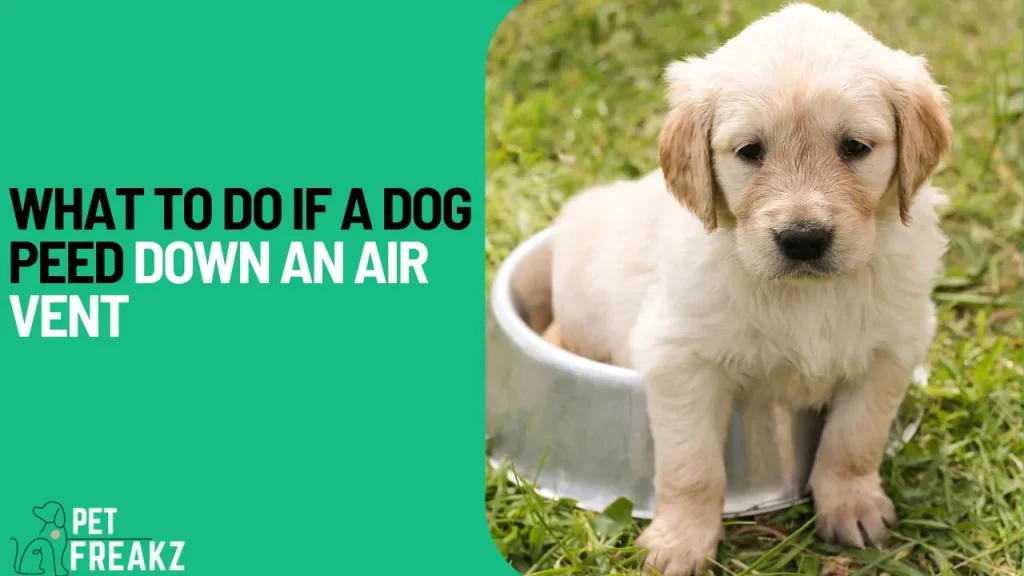
While this article primarily focuses on cats, it’s worth addressing the issue of dog urine in air vents. If your dog peed down an air vent, quick action is necessary to prevent further damage and eliminate the odour. Here’s what you should do:
- Turn off the HVAC system: Similar to cleaning cat urine, turn off the HVAC system to prevent the spread of urine particles through the air vents.
- Protect yourself: Put on gloves and a mask to protect yourself from any potential allergens or bacteria present in the urine.
- Clean the vent covers: Remove the vent covers and clean them thoroughly using a mixture of warm water and mild detergent. Scrub any urine residue and rinse them well before allowing them to air dry.
- Address Lingering Odors: To eliminate any lingering odours, use an enzyme-based cleaner specifically designed to break down the components of cat urine. Follow the instructions on the cleaner and ensure it is safe to use on the material of your air vents.
- Disinfect the area: Use a pet-safe disinfectant to clean the area surrounding the air vent. This will help eliminate any bacteria and neutralize the odour.
- Monitor for further issues: Keep an eye on your HVAC system and vents to ensure that there are no lingering odours or signs of damage. If you notice any persistent issues, it’s best to consult a professional for further assistance.
By taking these steps promptly, you can effectively address dog urine in air vents and restore cleanliness to your home.
Conclusion
Dealing with cat peed in air vents can be a challenging and unpleasant task. Discovering that your cat has peed in an air vent can be frustrating, but understanding the underlying reasons and implementing preventive measures can help address this behaviour.
By providing appropriate litter box conditions, reducing stressors, and ensuring a clean environment, you can discourage your cat from choosing the air vents as a spot for elimination, while solutions for eliminating urine smell can help create a fresh and odour-free living environment.
By cat-proofing your air vents, keeping cats out of vents, and choosing pet-safe floor vent covers, you can prevent further incidents of inappropriate urination. With these tactics in place, you can keep your house tidy and safe for both you and your animal pals.
FAQ
Can spaying or neutering my cat prevent them from peeing in air vents?
Spaying or neutering your cat can help reduce territorial marking behaviours, including peeing in air vents. However, it may not eliminate the behaviour if there are other underlying causes.
What can I do if my cat continues to pee in the air vent despite prevention efforts?
If prevention strategies do not resolve the issue, consult with a veterinarian to rule out any medical conditions and consider seeking the assistance of a professional animal behaviourist.
Are there any home remedies for removing cat urine odour from air vents?
While there are various home remedies suggested, it is recommended to use enzyme-based cleaners specifically designed for removing cat urine odours. These cleaners are more effective in breaking down the components of urine and eliminating odour.
Is it necessary to hire a professional cleaner for vent cleaning after a cat peed in it?
In most cases, thorough cleaning and disinfecting can be done by following the appropriate procedures outlined.
